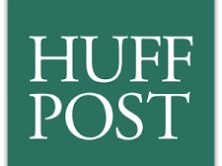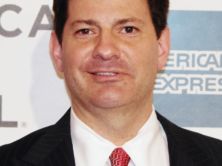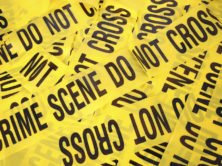
Check out iMediaEthics top 10 list of photo fails from 2013. (Flickr, "quinet," screenshot)
Below, check out iMediaEthics’ roundup of our top ten photo flops of the year: the fake photos, the graphic photos, the photos that shouldn’t have been published and more.
10. BuzzFeed Posts Pic of Murdered Woman
In August, BuzzFeed published — and quickly deleted — a graphic photo of a murdered woman.
The photo was originally posted on Facebook by a man named Derek Medina who admitted on Facebook to killing his wife, Jennifer Alfonso. Medina turned himself in to police.
BuzzFeed unpublished the photo from Facebook after numerous reader complaints and posted an editor’s note acknowledging the deletion. Read our story.
9. Jimmy Fallon, Jay Leno Photo Faked, News Doesn’t disclose
The New York Daily News and the New York Post, as well as national media like Fox News and Hollywood Reporter, all published a faked photo of Jay Leno and Jimmy Fallon, provided by NBC.
The photo showed Leno and Fallon sitting on a motorcycle and side-car, respectively, apparently driving down a road. While Leno and Fallon were actually posing on a motorcycle and side-car for the photo, NBC told us that it used a “fake background and a fake road” for the image.
None of the news outlets disclosed the image contained fakery, despite publishing the PR handout.
The Daily News further doctored the image to put a pile of cash on Fallon’s lap and money flying around in the background. There was no disclosure of that Photoshop in the print edition, but the online version contained a disclosure that the front page imagew as an “illustration.”
Read more.
8. Goofy Picture of French President Retracted
Agence France-Presse and Reuters killed a photo of French president Francois Hollande because he looked silly in the picture.
In the photo, Hollande is sitting and making a goofy smile. Despite accusations of censorship, AFP said it decided to take the picture because it “ridicules” the president, which is against the AFP’s policy.
“We took the decision to publish a photograph for its informative value, never for violence or, in this case, ridicule it can generate. For example, it often happens that our photographers at international conferences, surprise world leaders in disadvantageous positions, trying to put my finger in the nose or something,” AFP director of information Philippe Massonnet said to Le Nouvel Observateur.
7 Michelle Obama Oscar Dress Photoshopped to be less revealing
In one of the weirder Photoshop incidents of the year, Iran’s FARS News Agency doctored an image of Michelle Obama appearing at the Oscars.The photo was doctored to cover up her chest and bare shoulders. Check out the story.
6. Trayvon Martin Dead Photo on TV, Internet
Gawker and MSNBC both showed a photo of Trayvon Martin’s corpse, which was shown during the trial against George Zimmerman this summer.
Gawker published the photo, denying it was “clickbait” but instead for the “public interest.”MSNBC’s News Nation with Tamron Hall aired the photo quickly but Hall later tweeted that showing the photo was an “awful mistake.’
See our story.
5. Philippines, China News Outlets Hoaxed by Fake Time magazine covers
Two fake Time magazine cover images were published this year. In April, Philippines newspaper The Daily Inquirer published a faked photo showing Filipino president Benigno Aquino III on the cover of an April 20 issue titled “The Most Influential People in the World.”
Aquino wasn’t on the cover in reality, and The Daily Inquirer used a phony photo from an Internet meme. The Daily Inquirer apologized. (See this story.)
A month earlier, Communist Party of China-owned news agency Xinhua was also duped by a fake Time cover. The poorly Photoshopped image showed recently deceased politician Wu Renbao with the headline “The Man Who Men Of The Moment.” The real 2006 cover image showed Jack Abramoff. It was very badly Photoshopped to insert Wu’s face and to slightly change the cover text. However, the faked image still identified the subject of the cover image as Abramoff, not Wu. (More on this case in our report.)
4. ‘Cannibal Cop’ Not Caught in the Kitchen
In March, the New York Post published a doctored front page image showing Gilberto Valle, the police officer convicted of planning to “kidnap, torture, kill and eat women,” in a chef’s outfit holding a soup ladle.
But, the photo was, as we wrote at the time, just too good to be true.
The Post did note that the photo was a “Post photo composite,” but you’d have to have eagle eye vision to spot the disclosure. It took us at iMediaEthics about a half an hour of scouring the photo to see the very small print disclosure hidden inside the photo.
Check out our GIF comparison and our full story.
3. 2010 Miami Bank Robbery Photo Used in Nairobi Terrorist Attack Story
The Mail on Sunday used a 2010 photo with its 2013 coverage of the terrorist attack at Nairobi, Kenya Westgate shopping mall.
The 2010 photo showed a bank robbery in Miami and was released by the FBI. So how did it end up in the 2013 attack coverage? Mail on Sunday‘s managing editor John Wellington told iMediaEthics an unidentified source gave the photo to a “previously reliable correspondent” who them gave them to Mail on Sunday staff photographer Keith Waldegrave. While the Mail on Sunday did run the photo by Kenyan police and military forces, “neither gave us any indication that it was not a genuine image from the mall at Nairobi,” he told us.
2. AP Publishes, Retracts, Re-Publishes Navy Yard Pictures
The Associated Press had a photo kerfuffle in September when it published, retracted and then re-published two photos from its coverage of the Navy Yard shootings in Washington, D.C.
The AP retracted the two photos, which were provided by a source, Congressional staffer Don Andres, about six hours after releasing them. The AP issued a “photo elimination” notice saying it couldn’t ‘confirm that the incident shown in this picture is directly connected with the shootings.”
But later, the AP re-released the photos, after having confirmed that the photos were legitimate. The AP could have avoided all this confusion had it just vetted the photos prior to publishing them.
Learn more about this case.
1. El Pais Posts Fake Hugo Chavez Pic
In January, Spanish newspaper El Pais published a fake photo purporting to be (then-alive) Hugo Chavez with a breathing tube in his mouth. The picture was posted online briefly and published on the front page of the photo. But, the newspaper retracted the photo after realizing the photo wasn’t real.
El Pais‘ ombudsman, Tomas Declos, called the photo a “huge mistake” and said that the paper had previously had a successful working relationship with Gtres Online, the organization that sold the fake photo to El Pais. The Venezuelan government even threatened to sue over the photo’s publication for having “offended the president’s dignity.”





